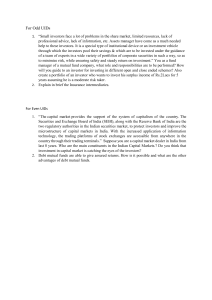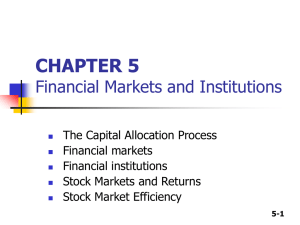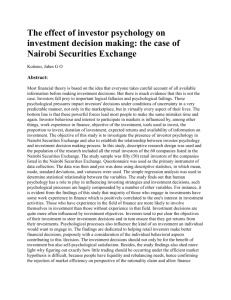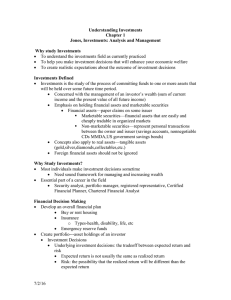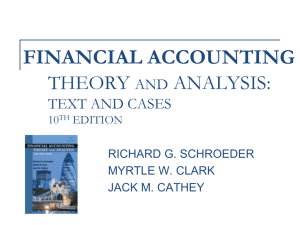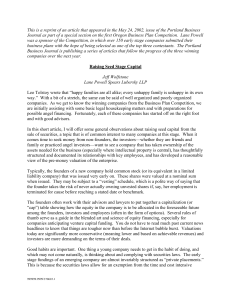Financial Markets & Institutions: Overview & Analysis
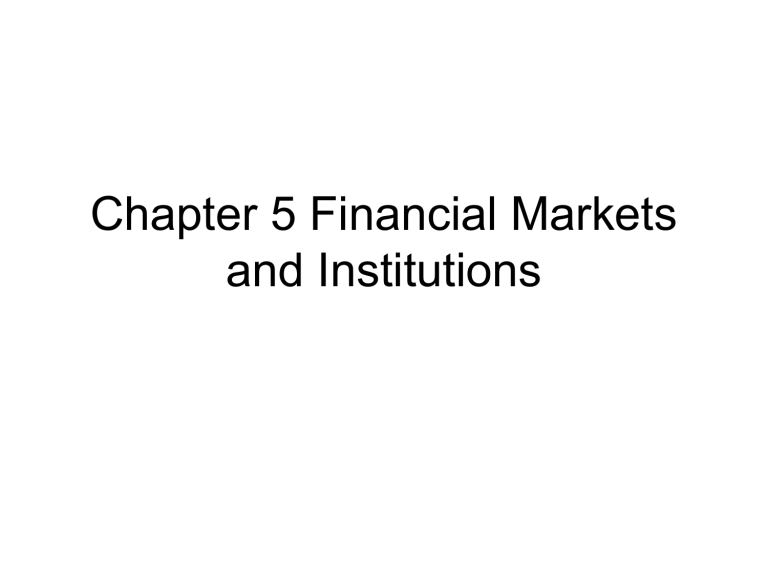
Chapter 5 Financial Markets and Institutions
• Role of the financial market : allocate scarce resources (capital) from savers
(suppliers) to investors (users).
• Suppliers: individuals and institutions with excess funds.
• Users or demanders: individuals and institutions who need to raise funds to finance their investment opportunities
I. Financial Markets
• Financial Market: is market place for selling financial securities: stocks, bonds and derivatives.
• A security is a piece of paper that represents the investor’s rights to certain prospects or property and the conditions under which he or she may exercise those rights.
• Stock or share represents ownership right in the corporation
• Bond is a debt instrument issued by corporations who borrow money.
• Derivative: is a security that derives its value from the value of another security
• Types of Financial Markets :
• Spot vs. futures market:
• Spot Market: assets are delivered “immediately”.
• Futures markets: participants agree to today to buy or sell an asset at some future date.
• Money vs. capital markets
• Money market: short term financial assets are traded
• Capital market: long-term financial assets are traded.
• Primary vs. secondary market:
• Primary market: market where financial securities are sold for the first time.
• Secondary market: market for previously owned financial assets.
Financial Institutions
• Commercial banks
• Investment banks
• Mutual savings banks
• Credit unions
• Pension funds
• Life insurance companies
• Mutual funds
Stock Market
• Auction market vs. Dealer market
(Exchanges vs. OTC)
NYSE vs. NASDAQ
Differences are narrowing
• Stock market transactions
• Google decides to issue additional stock with the assistance of its investment bank. An investor purchases some of the newly issued shares. Is this a primary market transaction or a secondary market transaction?
• What if instead an investor buys existing shares of Google stock in the open market-is this a primary or secondary market transaction?
What is an IPO?
• An initial public offering (IPO) is where a company issues stock in the public market for the first time.
• “Going public” enables a company’s owners to raise capital from a wide variety of outside investors. Once issued, te stock trades in the secondary market.
• Public companies are subject to additional regulations and reporting requirements.
Where can you find a stock quote, and what does one look like?
• Stock quotes can be found in a variety of print sources (wall street Journal or the local newspaper) and online sources
(Yhoo!Finance, CNNMoney, or MSN
Money Central).
Efficient Market Hypothesis
Securities are normally in equilibriumand are “fairly priced”.
Investors cannot “beat the market” except through good luck or better information.
Level of market efficiency
Weak-form efficiency
Semi-strong-form efficiency
Strong-form efficiency
• Weak-form efficiency: can’t profit by looking at past trends.
• Semi-strong form: all publicly available information is reflected in stock prices.
• Strong form: all information, even inside information, is embedded in stock prices.
• Empirical studies suggest the stock market is:
– Highly efficient in the weak form.
– Reasonably efficient in the semi-strong form.
– Not efficient in the strong from. Insiders have made abnormal (and sometimes illegal) profits.

